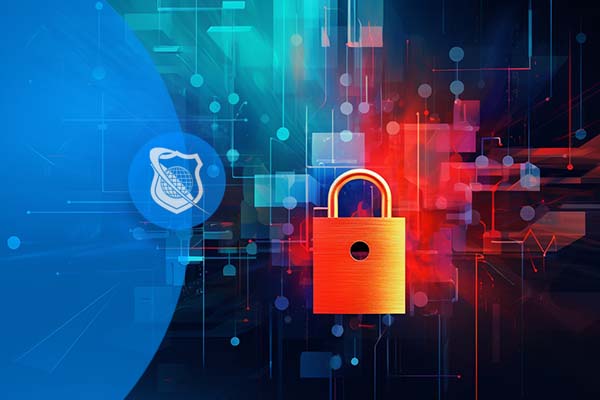Introduction
A Network Security Manager is responsible for designing, implementing, and overseeing an organization’s network security infrastructure. Interviewers assess candidates on their expertise in network security protocols, risk assessment, incident response, compliance, and security best practices. Below are common Network Security Manager interview questions, along with guidance on how to answer them effectively.
General Network Security Manager Interview Questions
1. What are the primary responsibilities of a Network Security Manager?
Answer:
A Network Security Manager is responsible for:
- Designing and implementing network security policies to protect against cyber threats.
- Managing firewalls, intrusion detection/prevention systems (IDS/IPS), and VPNs.
- Conducting risk assessments and security audits to identify vulnerabilities.
- Ensuring regulatory compliance with standards like ISO 27001, NIST, PCI-DSS, HIPAA, and GDPR.
- Leading incident response and disaster recovery planning.
- Training employees on cybersecurity awareness and best practices.
Employers look for candidates who can effectively manage security risks while aligning with business objectives.
2. What are the key differences between IDS and IPS?
Answer:
- Intrusion Detection System (IDS):
- Monitors network traffic for suspicious activity.
- Alerts administrators but does not take action.
- Example: Snort, Suricata.
- Intrusion Prevention System (IPS):
- Monitors, detects, and actively blocks malicious traffic.
- Sits in-line with network traffic to prevent threats.
- Example: Cisco Firepower, Palo Alto Threat Prevention.
Organizations typically use IDS for monitoring and IPS for proactive threat mitigation.
3. What security protocols do you use to protect a network?
Answer:
Common security protocols include:
- TLS/SSL (Transport Layer Security/Secure Sockets Layer) – Encrypts web traffic (HTTPS).
- IPSec (Internet Protocol Security) – Secures VPN communications.
- SSH (Secure Shell) – Encrypts remote administration connections.
- 802.1X (Network Access Control) – Ensures authentication before allowing network access.
- RADIUS and TACACS+ – Centralized authentication protocols for secure access control.
Employers expect candidates to understand how these protocols secure different layers of the network.
4. How do you ensure compliance with security regulations like GDPR, HIPAA, or PCI-DSS?
Answer:
- GDPR (General Data Protection Regulation) – Encrypts sensitive data, ensures data access control, and follows breach notification protocols.
- HIPAA (Health Insurance Portability and Accountability Act) – Implements strict security controls for handling healthcare data, including access controls and audit logging.
- PCI-DSS (Payment Card Industry Data Security Standard) – Enforces strong encryption, secure network segmentation, and access control policies for handling payment data.
Security managers must align security strategies with regulatory requirements to avoid legal penalties.
5. How do you handle a network security breach?
Answer:
A structured incident response plan (IRP) should include:
- Identification – Detect anomalies using IDS/IPS, SIEM logs, and user reports.
- Containment – Isolate affected systems to prevent further damage.
- Eradication – Remove malware or unauthorized access points.
- Recovery – Restore systems from backups and monitor for further threats.
- Lessons Learned – Analyze root cause and improve security measures.
Employers value candidates who demonstrate proactive and systematic incident response handling.
Advanced Network Security Manager Interview Questions
6. What are Zero Trust Architecture (ZTA) and its key principles?
Answer:
Zero Trust Architecture (ZTA) is a security model based on the principle of “never trust, always verify.” It includes:
- Least Privilege Access – Users receive the minimum access required for their role.
- Micro-Segmentation – Divides networks into isolated zones to limit lateral movement.
- Multi-Factor Authentication (MFA) – Requires more than one form of authentication.
- Continuous Monitoring – Uses AI and analytics to detect suspicious behavior.
Zero Trust is widely adopted to combat insider threats and sophisticated cyber attacks.
7. What are the best practices for securing cloud-based networks?
Answer:
- Implement cloud-native firewalls and intrusion prevention systems (IPS).
- Use identity and access management (IAM) with strong role-based access controls (RBAC).
- Enforce data encryption (in transit and at rest).
- Enable multi-factor authentication (MFA) for all users.
- Regularly audit security logs and configurations using cloud SIEM tools (AWS CloudTrail, Azure Sentinel).
Security managers must understand cloud security frameworks and provider-specific security tools.
8. How do you protect an organization against ransomware attacks?
Answer:
- Implement endpoint protection and behavior-based detection tools.
- Enforce regular backups stored in an isolated network segment.
- Use network segmentation to limit malware spread.
- Educate users on phishing and social engineering tactics.
- Deploy email filtering and application whitelisting to prevent malicious execution.
Organizations rely on a multi-layered defense strategy to mitigate ransomware risks.
9. What tools do you use for network security monitoring and threat detection?
Answer:
- SIEM (Security Information and Event Management) – Splunk, IBM QRadar, ArcSight.
- Network Security Monitoring (NSM) – Zeek, Wireshark, Suricata.
- Vulnerability Scanning – Nessus, Qualys, OpenVAS.
- Endpoint Detection and Response (EDR) – CrowdStrike, Microsoft Defender for Endpoint.
- Firewalls and IDS/IPS – Palo Alto Networks, Cisco Firepower, Fortinet.
Candidates should demonstrate hands-on experience with security tools and best practices for real-time threat detection.
10. How do you perform a penetration test on a network?
Answer:
A structured penetration testing process includes:
- Reconnaissance – Gathering network information using tools like Nmap.
- Scanning & Enumeration – Identifying open ports and vulnerabilities with Nessus or OpenVAS.
- Exploitation – Attempting to gain unauthorized access using Metasploit.
- Post-Exploitation – Assessing data exposure and privilege escalation risks.
- Reporting – Documenting findings and recommending remediation actions.
Security managers should be familiar with ethical hacking methodologies to strengthen defenses.
Conclusion
A Network Security Manager must be proficient in network security architecture, threat intelligence, incident response, compliance, and risk management. Candidates should demonstrate technical expertise, leadership skills, and the ability to adapt to evolving security threats.
Frequently Asked Questions Related to Network Security Manager Interview Questions
What are the key responsibilities of a Network Security Manager?
A Network Security Manager is responsible for designing and implementing security policies, managing firewalls and intrusion detection systems, conducting risk assessments, ensuring compliance with security regulations, and leading incident response efforts.
What skills are required for a Network Security Manager role?
Essential skills include expertise in firewalls, IDS/IPS, VPNs, network protocols (TCP/IP, DNS, DHCP), security compliance (ISO 27001, NIST, PCI-DSS), penetration testing, and SIEM tools like Splunk or QRadar.
What certifications help with becoming a Network Security Manager?
Certifications that enhance a Network Security Manager’s credentials include:
– Certified Information Systems Security Professional (CISSP)
– Certified Ethical Hacker (CEH)
– Cisco Certified CyberOps Associate
– GIAC Security Essentials (GSEC)
– CompTIA Security+
How do you handle a network security breach?
Handling a security breach involves:
1. Identifying the attack using SIEM logs and IDS/IPS alerts.
2. Containing the breach by isolating affected systems.
3. Removing the threat by patching vulnerabilities and eliminating malware.
4. Recovering affected systems from secure backups.
5. Conducting a post-incident analysis to improve security defenses.
What are the best practices for securing a corporate network?
Best practices include enforcing multi-factor authentication (MFA), using firewalls and endpoint security tools, implementing Zero Trust Architecture, regularly updating and patching systems, conducting security awareness training, and performing routine penetration testing.











